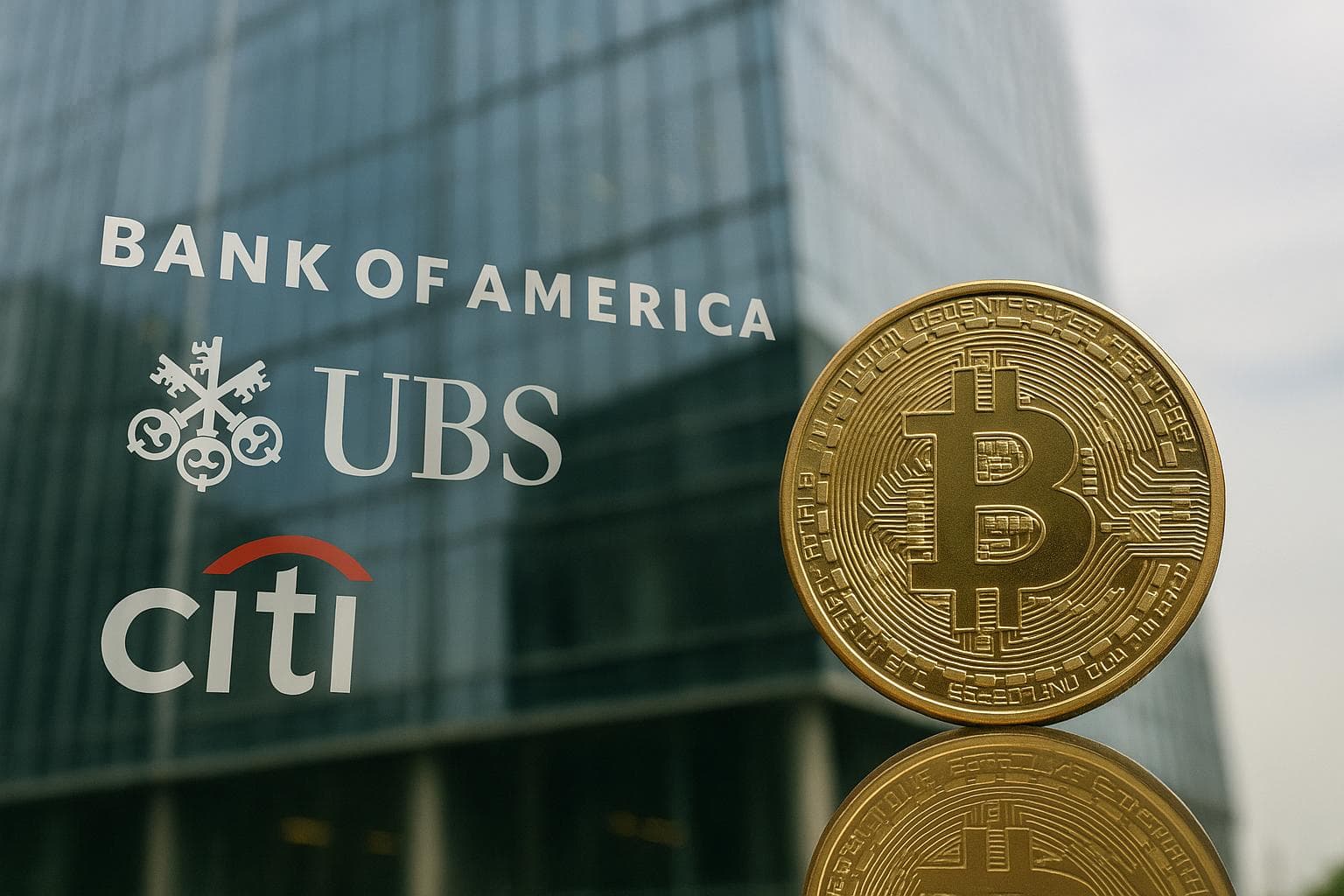Wall Street’s Next Frontier in Digital Money
In a move that could redefine both global banking and crypto markets, several of the world’s largest financial institutions — including Bank of America, UBS, Citi, and Goldman Sachs — are reportedly exploring the creation of stablecoins pegged to G7 currencies. The development, first reported by Reuters, signals a profound shift: traditional finance may finally be preparing to issue its own blockchain-based digital currencies.
If realized, the plan would bring regulated, institution-backed stablecoins into direct competition with market leaders like Tether (USDT) and Circle’s USD Coin (USDC) — two private issuers that currently dominate the $160 billion stablecoin market.
But this time, it’s not crypto startups leading the charge — it’s the banks themselves.
“This is the beginning of a consolidation of trust and liquidity inside the digital asset space,” said a London-based fintech analyst. “Once banks issue their own stablecoins, the line between crypto and traditional finance will dissolve.”
Why Now? A Convergence of Regulation and Opportunity
The timing is no coincidence. Regulators in the U.S. and Europe have spent the past two years refining frameworks for digital assets, particularly around asset-backed stablecoins that hold real fiat reserves in regulated accounts.
For major banks, this regulatory clarity is a green light. It opens the door for them to issue their own compliant digital currencies, pegged to trusted fiat currencies like the U.S. dollar, euro, or pound sterling.
In practice, this would allow global banks to create a blockchain-based payment network for cross-border transactions — faster, cheaper, and more transparent than the current correspondent banking system.
“It’s about efficiency and control,” said one executive close to the discussions. “If stablecoins are going to become the foundation of global settlement, banks want to own the rails — not ride them.”
What These Bank-Issued Stablecoins Could Look Like
While details remain speculative, analysts expect the first prototypes to be fully collateralized tokens, backed 1:1 by deposits in regulated accounts. This mirrors the existing model of stablecoins like USDC but with the added credibility — and oversight — of a global bank’s balance sheet.
Some institutions may go further, issuing multi-currency stablecoins, or even experimenting with tokenized bond reserves — stablecoins backed by short-term government debt to generate yield.
If successful, these products could merge traditional banking safety with DeFi-level liquidity, creating a hybrid asset class that operates across both markets.
For institutions, that’s a lucrative opportunity. Stablecoins generate revenue from interest on reserves and transaction fees — and banks, already experts in balance-sheet management, are ideally positioned to capitalize.
Ripple Effects Across the Crypto Ecosystem
The arrival of G7-backed stablecoins could reshape the entire digital asset landscape.
- Pressure on existing stablecoins: Tether and Circle could lose market share to more trusted, regulated competitors.
- Boost for DeFi: More institutional-grade stablecoins mean deeper liquidity and safer collateral for lending and yield platforms.
- Cross-chain integration: Bank-issued tokens could use blockchain rails like Ethereum, Solana, or Avalanche, driving new infrastructure partnerships.
- Regulatory harmonization: If banks set a global standard for transparency, other issuers may be forced to follow suit.
That said, the move could also centralize control within traditional finance. Unlike decentralized stablecoins such as DAI, bank-issued coins will likely have strict KYC/AML requirements, potentially limiting their use in open DeFi systems.
The Battle for Monetary Trust
The deeper question is not just technological — it’s philosophical.
Stablecoins have always existed in tension between freedom and regulation, transparency and control. When private banks begin issuing their own tokens, they effectively merge the worlds of fiat and crypto — but they also risk recreating the very concentration of power that blockchain was designed to avoid.
“The irony is that crypto started as an escape from banks,” said a senior strategist at an EU fintech think tank. “Now the banks are rebuilding the same system on-chain.”
Still, the potential benefits for global liquidity and payment efficiency are enormous. Instant settlement between continents could reduce transaction costs for businesses, streamline remittances, and even influence monetary policy if adoption scales.
What to Watch in the Coming Months
- Pilot Programs: Expect early prototypes in 2026, likely starting with USD- or EUR-pegged stablecoins issued by a consortium of major banks.
- Regulatory Updates: The U.S. Treasury, European Central Bank, and BIS are all drafting digital asset frameworks — any shift could accelerate launches.
- Blockchain Selection: Banks will need interoperable, scalable, and secure networks — Ethereum, Avalanche, or even permissioned versions of public chains are candidates.
- Market Reaction: Watch stablecoin dominance metrics — if Tether’s share starts slipping, institutional stablecoins may already be absorbing liquidity.
A Defining Shift for Both Crypto and Finance
The move toward G7-backed stablecoins isn’t just another trend — it’s the start of a structural evolution. For years, crypto built its own financial world outside the banking system. Now, that system is stepping into crypto — not to compete, but to claim it.
If banks succeed, the stablecoin market will no longer be defined by startups or offshore issuers. It will be shaped by the same institutions that have long controlled global money — only this time, on-chain.
The question is whether this new era will make digital finance more open — or simply more efficient at reinforcing the old order.


Comments